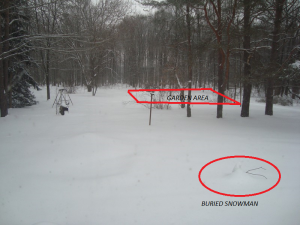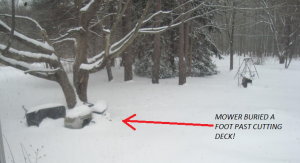Deane over at Eat the Weeds posted this today, in which the book is reviewed by Mark Sisson.
I thought it was a good thing to pass along, so here is the excerpt:
Wow.
It isn’t often that I write book reviews (have I ever? – serious question), but it isn’t often that a truly important book like Lierre Keith’s The Vegetarian Myth pops up on my radar just begging for one.
You may remember it from a brief mention I gave back in September, or maybe from Dr. Eades’ endorsement of it. You may have even already read the book yourself. If you haven’t, read it. And if you have? Read it again or get one for a friend.
That goes double for vegans, vegetarians, or anyone on the cusp of adopting that lifestyle. If you fit the bill, especially if you’re considering veganism/vegetarianism for moral reasons, drop what you’re doing and run to the nearest bookstore to buy this book. It’s incredibly well-written, and the author has a real knack for engaging prose, but that’s not the main reason for my endorsement. The real draw is the dual (not dueling) narratives: the transformation of a physically broken moral vegetarian into a healthier moral meat eater; and the destructive force of industrial agriculture. The “Myth” in question is the widely-held notion that vegetarianism is the best thing for our health and for our planet. On the contrary, Keith asserts that a global shift toward vegetarianism would be the absolute worst move possible. It’s vitally important. It’s definitive. It’s somewhat depressing, and it’s brutally honest. It also might be the book that changes your life.
Lierre Keith is a former vegan/vegetarian who bowed out after twenty long years of poor health and paralyzing moral paradoxes. Her original goal was to explore the question, “Life or death?” as it pertained to food. She, like most vegetarians, assumed she had a choice between the two, that it was an either/or thing. Eating tofu and beans was life, while a burger represented death. Life didn’t have to involve death – that was the weak way out, and the honorable (and difficult, and therefore meaningful) way to live was by avoiding animal products of all kinds. No blood on your hands or on your plate meant a clean moral slate.
Or so she thought. See, Keith began as a moral vegetarian. She never espoused the idea that meat was inherently unhealthy or physically damaging; she was simply a young kid who “cried for Iron Eyes Cody, longed… for an unmolested continent of rivers and marshes, birds and fish.” We’ve all heard of kids who “turn vegetarian” when they find out their chicken nuggets once walked, clucked, and pecked. Well, Keith was that five year old who bemoaned the “asphalt inferno of suburban sprawl” as a harbinger of “the destruction of [her] planet.” Hers was a deep-seated commitment to the preservation of all living things, not just the cute and fuzzy ones.
That expansive scope meant she looked at the big picture, and suffered for it. She never got to enjoy that oh-so-common smug vegetarian elitism, because she was too aware. Seeds were living things, too. They may not have had faces or doting mothers, but they were alive, and that meant they could die. Killing slugs in her garden was impossible, and deciding whether to supplement the soil with actual bone meal was excruciating. Unlike most of her peers, she knew that avoiding direct animal products didn’t mean her hands were clean. They might not be dripping red, but living organisms died to make that head of lettuce possible. Fields were tilled and billions of microorganisms were destroyed, not to mention the mice, rabbits, and other wild animals whose environments are leveled to make way for industrial farming. And so whichever direction she went – home gardening, local produce, or grocery store goods – Keith was contributing directly and indirectly to death.
What’s a moral vegetarian to do?
She briefly entertains studying with a mystic breatharian, hoping to (tongue-in-cheekily) learn to subsist purely on oxygen. She spends hours picking slugs from her garden and goes to relocate them. Nothing works. She keeps coming back to death.
“Let me live without harm to others. Let my life be possible without death.” Keith realizes this vegetarian plea (which “borders on a prayer”) is impossible to fulfill. She can’t live and eat without something dying, and that’s the whole point of it all. Death is necessary and natural. Circle of life, you know? Without death of some sort, life would get a whole lot worse.
Keith ultimately sets her sights on one of our favorite human “advancements” at the Apple: agriculture! Readers of MDA already know how agriculture altered our trajectory forever, but maybe not in such vivid detail. We focus on the lowered life expectancy, reduced bone density, compromised dental health, and the stooped, shrunken skeletons of our Neolithic ancestors, but Keith shows how grain agriculture actually destroys the land it touches. The Fertile Crescent, ground zero for grain development, used to be, well, fertile. It was verdant, lush, and teeming with life – including nomadic hunter gatherers. Paradise, you might even say. Animals grazed on perennial grasses, pooped out nutrients, and gradually those nutrients would work themselves back into the soil. It was a beautiful, natural life cycle that worked great for millennia. But once grains were grown and the land was irrigated, everything changed. Perennial renewable grasses became annual grains. Animals no longer grazed and replenished the soil. The top soil was robbed of nutrients and faded away. Irrigation meant crucial annual floods were disrupted or even halted. A massive monkey wrench was thrown into the system, and rather than coexisting as a complementary aspect of nature, man thus commenced the conflict with the natural world that rages to this very day.
And that’s the crux of her argument – that modern industrial agriculture is wanton destruction. Grain-based, vegetarian agriculture is even worse, because it attempts to eliminate a crucial player in the normal life cycle of the planet. Animals, which provide manure, calcium, and other nutrients for the soil, have to be part of the equation. Whenever a culture turns to a grain-based agricultural system, these same problems arise. Annual grain crops killed the American prairie and, for the vegans out there, they kill the millions of animals, bugs, and birds that rely on specific ecosystems to survive. The vegan’s soy burger has nary an animal part, but the machines that worked the soybean fields were greased with the blood of a thousand organisms. The vegetarian’s wheat crops feed millions, but robs the land of nutrients and destroys the top soil necessary for life.
Primal readers won’t be surprised by what they read. They may be horrified at the extent of the environmental damage caused by industrial agriculture, but they won’t be surprised (given agriculture’s poor track record with our health). Keith lays out an effective case against grains (and for a Primal-ish, low-carb, high-fat diet, believe it or not) on nutritive, moral, and economical grounds that’s tough to refute. The nutritional information will come as second nature, but the sources are sound and the references are powerful.
There’s more, far more, but I’d rather not spoil the entire thing. Just read it and rest assured that it’s worth your time. The book is a must-read, and a great ally for anyone interested in promoting a healthy, sustainable, omnivorous future. Read this book and distribute it to your vegan friends.
Primal approved!
Read more: http://www.marksdailyapple.com/vegetarian-myth-review/#ixzz2qaSEmMRa
I’m ordering this book today. I know just who to give it to!
If you’d like to order the book, you can do so by clicking the image below:





















